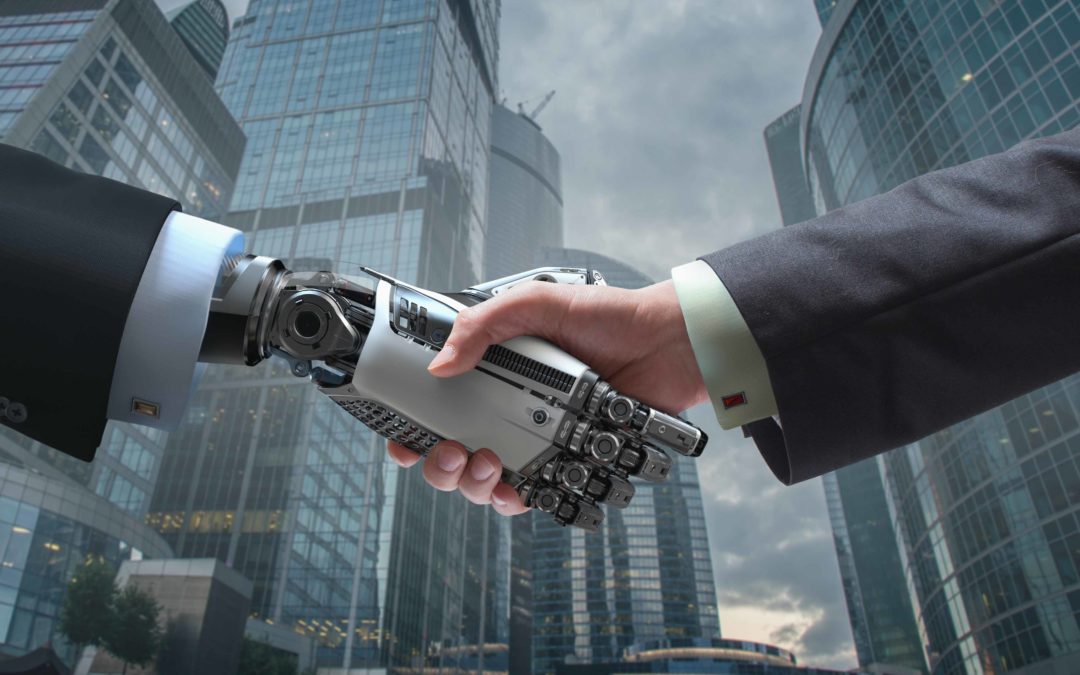No Results Found
The page you requested could not be found. Try refining your search, or use the navigation above to locate the post.

This is part 1 of 4 of an introduction to Preparing your Company for a Liquidity Event:
First and foremost, a liquidity event is an exit strategy for investors to convert their equity into cash and occurs when any of the following typical change of control events takes place:
1. merger
2. acquisition
3. sale purchase – part or whole, shares or assets
4. leveraged recapitalization – debt to finance purchase of equity
5. ESOP
6. IPO of a company
The occurrence of liquidation, dissolution or winding up of a company may also be included as a liquidity event.
This is usually an exciting and most looked forward to event in the business cycle. For some it means injection of new growth capital, for others it means cashing out their multi-million dollar exits. While it is certainly an event to look forward to, it is also something that should be planned towards.
Here are 8 steps that should be considered in the preparatory stage:
Determine the team that will be involved in the transaction as well as the effect of laws and business in cases of cross-border related events. Apart from conducting an internal due diligence and legal audit which would help in sanitization and preparation, the following steps may be considered while preparing for a liquidity event.
1. Notes
Depending upon the type of liquidity event, the document providing for the liquidity event such as convertible notes, instruments for future equity, share purchase or stock acquisition agreements, funding and investments agreements should be reviewed. Any action needs to be sanitized before occurrence of the liquidity event.
It is also highly important to note where the important clauses are in each of these contracts and how they can be manipulated.
E.g:
Sample Liquidity Event Clause in a Share Purchase Agreement:
Upon the occurrence of a Liquidity Event (as hereinafter defined), the Borrower shall prepay the outstanding Principal Amount of all Notes in accordance with the redemption prices (the “Mandatory Redemption Prices”) set forth below (expressed as a percentage of the outstanding Principal Amount being prepaid), together with Interest accrued and unpaid on the outstanding Principal Amount of the Notes so prepaid through the date of such prepayment and reasonable out-of-pocket costs and expenses (including reasonable fees, charges and disbursements of counsel), if any, associated with such prepayment. If a Liquidity Event shall occur during any Loan Year set forth below, the Mandatory Redemption Price shall be determined based upon the percentage indicated below for such Loan Year multiplied by the Principal Amount which is being prepaid. For the purposes hereof, “Liquidity Event” means (i) the occurrence of a Change of Control, or (ii) the liquidation, dissolution or winding up of Parent or Borrower or of one or more of Parent’s Subsidiaries that, individually or in the aggregate, constitute a material part of the business, operations or assets of the Credit Parties and all of their respective Subsidiaries, taken as a whole.
2. Valuation
Obtain company valuation, of shares or assets, around liquidity event for negotiation. Many good deals fall apart due to unrealistic expectations of founders. While you cannot have unrealistic expectations, you shouldn’t have one that is too low either. In negotiations, it is always helpful to have an independent 3rd party valuation.
3. IP Portfolio
Identify and register all IP of the company, obtain licenses, review licensed products. Having an independent IP valuation would also help in the negotiation process since it is always cause for price differences.
4. Finance
Appointment or change in financial management. Exchanges in different countries will have different requirements for financial managers.
5. Audit
Conduct an audit to analyze revenue recognition and depreciation and amortization policy. Exchanges in different countries will have different requirement for audits.
6. Corporate & Contractual Compliance
Updating and review of minute books, confidentiality or non-solicitation or non-compete contracts, book of contracts, corporate records, accounting records, ESOP, third party consents.
7. Statutory & Regulatory Compliance
Updating of approvals and licenses, company law authority reporting, employment law compliance and tax compliance.
8. In-house counsel
In-house counsel will assist in controlling cost and preparing documentation as well as avoiding pitfalls. While most see the role as an additional cost centre, this may prove untrue. An in-house counsel knows exactly which areas to concentrate on, the right questions to ask and the right people to approach. On the broader scale, this would result in less time spent and lesser cost attached.
Stay tuned to the next few parts!
| Contact Person | Dylan Tan |
| Designation | COO |
| Dylan@2ibpartners.com |
The page you requested could not be found. Try refining your search, or use the navigation above to locate the post.

In this event, Managing Director, Yang Yen Thaw of 2iB Partners will join a panel of other experts to speak on cross-border M&A in South East Asia. 2iB continues to strengthen and develop it’s presence and network in cross-border M&A through strong synergistic partnerships with key players.
Southeast Asia is a dynamic market with nearly 700 million people, now this region is becoming the world’s most attractive destination for foreign investment. Greenfield investment and M&A activities increased rapidly in the past five years in this region. A lot of multinational companies are increasing the investments in this region due to the cost advantage and continuous opening policy, SEA now receives more foreign direct investment than China. Meanwhile, China is shifting the role from an investee to an outward investor. Following the ‘One Belt, One Road’ plan, China will become another big investor in Southeast Asia besides Japan. For multinational companies, how to capture the potential direct investment and M&A opportunities and managing their investment portfolios and maximize long-term value? And how to meet the legal, finance and culture challenges for the cross-border investments, these are very rich and interesting topics.
This year’s Southeast Asia Corporate Investment Merger & Acquisition Conference 2017 will be held in Singapore. This conference is an exclusive event for the corporate executives from the global multinational corporations to learn the latest trends and regulations affecting the cross-border investment in Southeast Asia. The event is also a valuable opportunity for business networking by exchanging the practical experience and lessons of direct investment, M&A, JV partnership in this region. Senior executives from MNCs, PE, VC and professional advisors for finance & tax, legal, management consulting, investment banking will join this year’s exciting event. We are looking forward to your participation!
| Speaker | Details |
| Mr. Angelo Dell’ Atti | Global Head, Corporate Finance, IFC (International Finance Corporation) |
| Mr. Johnson Chng | Managing Director, Silk Road Finance Corporation |
| Mr. Patrick Ip | Managing Director, China-ASEAN Investment Cooperation Fund |
| Mr. Ryoichi Nishizawa | Global Head of M&A, Mitsubishi Corporation |
| Mr. Seth Sunderland | Executive Director, Investment Banking, M&A Asia, UBS |
| Mr. Saurabh N. Agarwal | Managing Director, Warburg Pincus |
| Mr. Hadi Cahyadi | Managing Partner and Founder, Helios Capital |
| Mr. Kevin Murphy | Managing Director, Andaman Capital Partners |
| Mr. Edwin Vanderbruggen | Senior Partner, VDB Loi Co.,Ltd |
| Mr. Alex Kimura | Chief Strategy Officer, Asia, Aviva |
| Mr. Sikh Shamsul | Foreign Investment Division, Malaysian Investment Development Authority |
| Mr. Greg Ohan | Director, Vietnam, Jones Lang LaSalle |
and many more!
Event is organized by Valuetang LLC. For registration and enquiries please contact : charles.shangguan@valuetang.com and jenny.wang@valuetang.com
| Contact Person | Dylan Tan |
| Designation | COO |
| Dylan@2ibpartners.com |
The page you requested could not be found. Try refining your search, or use the navigation above to locate the post.

Intellectual Property or IP used to be known as industrial property. With the inclusion of various other works such as art and trading names which involved 3 basic elements – time, effort and money, the term changed from industrial property to intellectual property. The basic tenets for qualification of IP protection are novelty and distinctiveness.
IP registrations or regulations began from 1700s. IP basically covers the following:
1. Trademarks
2. service marks
3. copyright
4. patent
5. design
6. an extension to protection of IP are trade secrets and confidentiality.
IP rights may be a bundle or rights such as in copyright and a complete monopoly such as in patents. It may be a limited protection such as designs or last forever such as trade / service marks. There may be alternate forms of protection of IP, for instance, protection of a 3-dimensional representation by a 2-dimensional representation. If it can be proven that independent time, effort and money have been expended to arrive at a product, it may form a separate subject matter of IP protection.
1. Convert your idea into a tangible form – on paper, digital media, scraps, models
2. Use documentation to protect or prove your IP
3. Register your IP in countries you are most likely to use or where your IP may find application
With the advent of internet and new technologies such as AI, blockchain and machine learning, global application of IP has taken on different forms and one has to be more careful of violations apart from possibility of IP violation, misappropriation, infringement or passing off. Aspects of defamation by libel may also be covered in social media. Documents like confidentiality agreements, intra-companies and inter-companies are critical in IP.
Individuals or companies strive to popularize their trademarks. But in doing so, they run the risk of losing their rights when it becomes generic. Some interesting examples where you may not have know were real trademarks, but turned victims of genericization are provided below. The actual description, origination and generic names and its company owners have been included next to them.
1. Aspirin – acetylsalicylic acid; Bayer AG
2. Heroin – derived from “heroisch”, a German word; Bayer AG
3. Band-Aid – adhesive bandage or medicated plaster; Johnson & Johnson
4. Cellophane – regenerated cellulose and diaphane
5. Escalator – letter “e” + “scala”, meaning steps in Latin; Otis Elevator Co.
6. Trampoline – from “trampolin” a Spanish word for diving board
7. Thermos – vacuum flask, from the Greek word “therme” meaning heat;
8. Kerosene – combustible hydrocarbon liquid; The North American Gas Light Company
9. App store – an online store for applications; owned by Apple who abandoned it in 2013
10. ZIP code – Zone Improvement System; United States Postal Service
11. Zipper – another noun for the generic “zip”; B. F. Goodrich
12. Xerox – photocopy; Xerox Corporation
1. Kleenex – facial tissue; Kimberley-Clarke
2. Frisbee – flying disc; Wham-O
3. Bubble Wrap – inflated cushioning; Sealed Air
4. Adrenalin – Epinephrine: Parke-Davis
5. Hula-hoop – toy hoop; Wham-O
6. Jacuzzi – hot tub; Jacuzzi
7. Memory stick – flash memory storage device; sony
8. Styrofoam – extruded polystyrene foam; Dow Chemical Company
9. Superglue – Cyanoacrylate adhesive; Super Glue Corporation
10. Velcro – hook and loop fasteners; Velcro Company
In fact, your word processor may not even register these as incorrect spellings and who would use the generic or correct name for some that are more appropriately named trademarks!
| Contact Person | Dylan Tan |
| Designation | COO |
| Dylan@2ibpartners.com |
The page you requested could not be found. Try refining your search, or use the navigation above to locate the post.

There are many trends around the world but I believe that most trends center around one key trend. In the past 10 years, what was this key trend that drove the economy and reaped in billions of dollars in revenue?
There are some buzzwords; E-commerce, cloud computing, cord-cutting, social media etc. But all of these seem to converge to one common point – Mobile. From 2009 to 2016, smartphone sales grew a whopping 9 times! Where having that smartphone in your pockets now was nothing but a dream 15 years ago, now almost everyone has a piece of that technology.
Some key players that rode this trend are now trading at at least 900% from where they were. Some even grew approximately by 9000%. It is also noted in most annual reports in 2016 that a significant portion of revenue growth in advertising also now comes from mobile.
I believe however that there may be a new key trend emerging, one that will be more powerful than mobile (mobile will now be a part of that key trend) and will serve to become a good bulk of the economy in the world, also bringing forth a new set of tech titans.
The world of machine and deep learning has been advancing at a rapid pace ever since the invention of deep learning neural networks. Tensorflow for instance, is an opensourced software Library for machine intelligence developed by Google. At a high level, TensorFlow is a Python library that allows users to express arbitrary computation as a graph of data flows. Nodes in this graph represent mathematical operations, whereas edges represent data that is communicated from one node to another. TensorFlow is primarily used for deep learning in practice and research.
Google also disclosed recently that it has created a new venture fund dedicated to investing in AI and machine learning companies. Many other start-ups are also riding the wave of this technology that is potentially world changing.
Interestingly one of the main crux of the driverless car is having the ability for a camera to process, learn and identify real life images. The self-driving car market has been one that has been advancing at break neck speed yet somewhat unnoticed by law makers.
Law makers are now taking steady steps towards preparing for a driverless future. It is amazing what the future holds with companies like Ambarella and Google and what they have in store in the foreseeable future.
When tossed with a tech conversation, most knee jerk thoughts come in the form of job displacement. This is especially so in Singapore’s very much process-driven economy. It is possible that much of our processes have room for automation, however, does this necessarily equate to the loss of jobs? It is an ongoing debate for employees and entrepreneurs alike. With regards to employees and job automation, I believe the important thing is to engage a proactive and pre-emptive strategy.
Many are concerned over the loss of the human element, termed the emotional economy and perhaps a loss of jobs. What I believe is that old skills are not disappearing but rather evolving. Marketing for instance has gone through many phases- physical advertisements, direct sales and now social selling following the digital uptake. There weren’t any digital marketing or SEO specialists jobs years ago. That being said, even with all these tools like Buffer, various automation and scheduling tools, good marketers who know their craft, know how to personalize and add the human touch to their messages. However, while the skills remains somewhat similar, there is a re-invention of it.
Similarly, for recruiters, there are now matching automation tools but that should not disrupt, instead it should make the recruiter more effective. There still needs to be the human element nevertheless. Hiring an employee by merely checking boxes is a recipe for disaster. A proper recruiter should make subjective judgements of cultural fits and many other qualitative and subjective factors.
We are now embarking into the industry 4.0 where computers and automations will come together in a completely new way with lesser inputs from humans. Smart factories or Smart manufacturing aims to take advantage of advanced information and manufacturing technologies to enable flexibility in physical processes to address a dynamic and global market.
Smart manufacturing also utilizes big data analytics, to refine complicated processes and manage supply chains. Advanced robots and machinery operate autonomously and can communicate directly with manufacturing systems. Furthermore, these robots also have artificial intelligence that allows them to learn from experience. While exciting, I am genuinely picturing the I, Robot scene (2004).
Apple recently announced it’s intention to invest USD1bn into a US advanced manufacturing fund. Many other bigger manufacturing companies are also investing into smart technologies to make manufacturing more efficient. Supposedly, with the build up of these new types of factories, there will be more jobs created as service providers will build around these factories.
It is said that 90% of data has been created over the past 2 years. If that is the case, in 5 years, the cost of managing big data would be too immense and costly using normal practice. Typically, organizations simply spend bigger and bigger checks to invest in bigger more robust servers. Now there are more efficient way to process and manage big data. Cloudera is a US-based company delivering the Apache-Hadoop based software. They see themselves as a modern platform for machine learning, advanced analytics and a deliverer of a modern platform of data management. -Apache Hadoop is an open-source software framework used for distributed storage and processing of dataset of big data using the MapReduce programming model.
With self-driving vehicles, cryptocurency and machine learning on the rise, the companies producing high end graphic chips and processing hardware are more in need than ever. Bitcoin made cryptocurrencies popular in recent years, but newer technologies, including Ethereum, have sparked a wave of mining using high-end gaming graphics cards. If the self-driving cars hits the roads and goes into mass production, companies like Nvidia should be raking in millions (which seems to be what investors are expecting).
Blockchain technology was originally developed as part of the digital currency Bitcoin. But the 2 are not the same. Blockchain can support a wide range of applications and it’s already being used for payment services, supply chain tracking and more.
In essence, a blockchain is a record of transactions, a digital ledger. These transactions can be any movement of money, goods or secure data—a purchase at a clothing store etc. It is designed to store information in a way that makes it virtually impossible to add, remove or change data without being detected by other users.
Today, transactions are verified by a central authority—like a government or a bank. Blockchain re-distributes this power since verification now comes from multiple users achieving a consensus.
Blockchain has the potential to change transactions, interaction with the government and verification of authenticity of everything from potatoes to shoes. It combines the openness of the internet with the security of Cryptography to give everyone a faster, safer way to verify key information and establish trust.
Blockchain’s potential is real but the technology is still in its early stages. Before it can be widely adopted, it will have to overcome a number of hurdles to maturity. One good sign towards maturity is the increased compliance required by SEC (US) and MAS (Singapore).
I am of the opinion that the future is shaped by our collective imagination, efforts and experience. From a business angle, we need to stay ahead of these trends and have the right plan for the future. The sweet spot lies in the ability to combine traditional business practices with innovative technology without losing the human element. For this, we need large, tech saavy yet nimble and dynamic companies – the “super firms” of the future.
From an employee point of view, more proactive and pre-emptive steps may be required in order to stay relevant. Who knows, with the implementation of smart contracts, even lawyers may need to code!
-the following is purely an opinion and does not constitute advice of any form.
| Contact Person | Dylan Tan |
| Designation | COO |
| Dylan@2ibpartners.com |
The page you requested could not be found. Try refining your search, or use the navigation above to locate the post.

The 1960s saw a plethora of conglomerates being used to raise finance with low interest due to their risk diversification and other factors. It was also glamorous to be seen owning diverse industries, like Woolies or Woolworths Group in UK. Free cash flows providing risk capital for investment and cross-selling between customer databases were some of the advantages. However, this was short lived as the conglomerate could not keep up with inflation, interest rate and manageability. It was difficult to sustain or justify the share price in the market. Conglomerates began consolidating, de-merging and returning to their core competencies.
The problems with conglomerates were many – cash management, costs, cross-subsidies, increased layers of often diverse management, decreased transparency in accounting and cash position, bureaucracy, inertia and difficulty in calculating true value of the stock. Spin-offs of subsidiaries of conglomerates to counter disruption or effective evaluate them were options, but too expensive to even consider. The conglomerate was no longer serving its purpose and are fast becoming disrupted with technology which contributed with increased confusion over digital, big data and data analytics due to their diverse nature. Take for instance conglomerates like Kodak who were too arrogant to recognize simple disruption by refusing to acknowledge digital photography.
According to the World Economic Forum – “The First Industrial Revolution used water and steam power to mechanize production. The Second used electric power to create mass production. The Third (3IR) used electronics and information technology (technology) to automate production. Now a Fourth Industrial Revolution (4IR) is building on the Third, the digital revolution that has been occurring since the middle of the last century. It is characterized by a fusion of technologies that is blurring the lines between the physical, digital, and biological spheres”.
Technology brought about a new age of small businesses with big changes. Changes disrupting conglomeration. 3IR brought in a new age of entrepreneurship. Individuals began their own businesses. These companies brought in techies, nerds and geeks together to begin small but disruptive companies. The internet boom and bubble were born. With computers and the internet, the 3rd industrial revolution (3IR), everything began to change. Disruption. Information along with services and products were delivered at the doorstep. But traditional SMEs were scrambling to stay relevant. They still are.
Riding on 3IR, the 4IR is further bringing in individuals who are fast embracing individual businesses or companies led by a key handful of people. Concepts like AI, AR, VR, IoT, robotics, autonomous vehicles, 3-D printing, nanotechnology, biotechnology, materials science, energy storage, and quantum computing merge the virtual with reality. Changes which used to take years are now converted into months and weeks.
Industries today are fast becoming disrupted with these technologies which are capable of rendering many, conglomerates and individuals alike, jobless. Typical cases in big companies were Novar plc and those mentioned above. However, even though businesses based on 4IR were disruptive on human capital, their valuations were based on projections and investments and not on the value of the company itself. Cost of the company was the exit potential it provided; mainly in trade sales or the holy grail of startups – the IPO. Technology might very well be a victim of its own success.
Many traditional industries which are primarily process driven, face problems of survivability and sustainability. Many are content to compete for the ever-shrinking market. While few key players continue to survive, ones without USPs or MSPs, are in clear and present danger of folding up. 3IR and 4IR provided power to the hands of small businesses and individuals. It became the great equalizer. What a small startup or SME can achieve in a few dollars would take a larger corporation weeks or months and a high budget. The digital revolution disrupts businesses and populations. Tech companies too have their own problems. Management and perception issues like those faced by Uber in the US and Housing.com in India. Wisdom and maturity are key issues ignored by these fast companies.
Advanced countries that have trained its citizens on process based thinking are in immense danger of having their jobs displaced by technology. While large companies build their own technology in-house, the problem is the objective and objectivity. Such companies have a specific direction and the in-house department solves that. Many a times the universality of application of that technology is lost. Not so with the smaller guys. Their problem-solving ability is more objective. More global. They begin ideating with the objective of scaling up, internationalizing and disrupting. But great care must be exercised with in-house tech or a tech acquisition. There are many failures such as Mattel Inc’s 1999 $3.6 billion acquisition of The Learning Company; who can forget Napster, a company in its death helped monetize customers for companies like Apple and Amazon; and my own personal favourite, Palm.
There is a solution. What is the future for SMEs if it cannot be a conglomerate or ride on 3IR and 4IR? A CoAggregate. Where smaller companies or SMEs in the same or similar sector create a larger company and co-own it. So as the age of conglomerates descend, the startup/entrepreneur/SME must also evolve. Both these forms of business need to adapt rapidly with changing their business models, collaborate, innovate and future-proof disruption. They need to survive and sustain. A process where the SMEs get together and co-own a larger enterprise while pursuing their own company interests. Creation of a matrix of complementary in-line companies – that are intertwined and where they are of the highest relevance to each other – ensures survivability and sustainability. Just as senior more experienced workers can impart invaluable experience and wisdom to millennials and millennials provide drive and innovation to the experienced, so also do traditional SMEs provide the valuable input to new and modern technologies and the latter provides not just customized, but a much broader perspective to industry applicability. Technology SMEs need the wisdom and maturity of the traditional SMEs. They must expand their business universe – together.
They must “CoAggregate”.
| Contact Person | Dylan Tan |
| Designation | COO |
| Dylan@2ibpartners.com |
The page you requested could not be found. Try refining your search, or use the navigation above to locate the post.